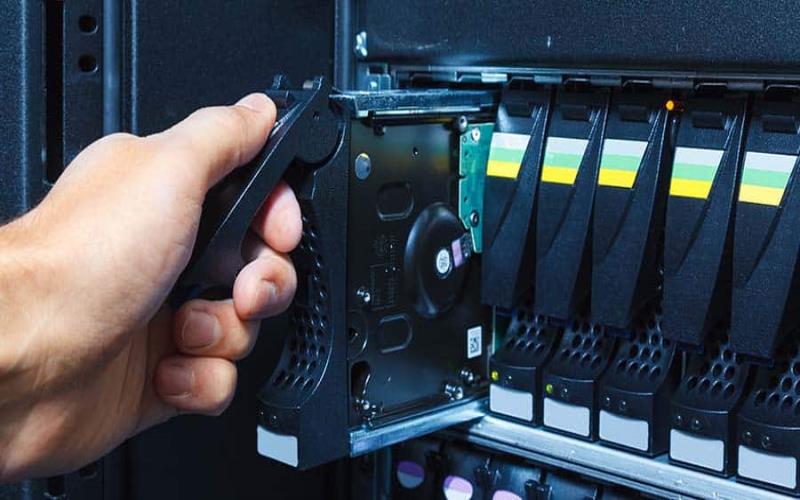In order to increase data storage performance, reliability, or both, RAID (Redundant Array of Independent Disks) technology combines many physical hard drives into a single logical unit. Performance, redundancy, and data protection are all offered at differing levels by various RAID configurations. Let’s examine RAID 0, 1, 5, 6, and 10 and talk about ways to recover data from failed RAID arrays:
Striping in RAID 0 doesn’t offer any redundancy and is solely focused on throughput. Multiple drives are used to stripe data, which accelerates read and write operations. The RAID 0 array’s data is lost if one drive fails, though. RAID 0 data recovery is typically difficult and requires expert expertise.
Data is mirrored across two disks in RAID 1 (Mirroring). This offers redundancy, which means that even if one drive fails, the data is still duplicated on the other. Because the data is undamaged on the remaining disk, data recovery from RAID 1 is rather simple.
Block-level striping with distributed parity is used in RAID 5. With the distribution of parity information across all drives, fault tolerance, and data redundancy are provided. The RAID can continue to operate even if one disk fails, and the data can be rebuilt using parity information. However, performance may be compromised during a drive rebuild.
RAID 6 is similar to RAID 5, RAID 6 employs two sets of parity information to increase fault tolerance. This ensures that data won’t be lost even if up to two drives fail. By recreating the data using the parity information, RAID 6 recovery is possible.
The advantages of RAID 1 and RAID 0 are combined in RAID 10. Mirroring two sets of striped drives is required. Both redundancy and performance advantages result from this. The array can still function if a drive fails because the data is still on the other drive in the mirrored set. Because of the mirroring feature, data recovery from RAID 10 is rather simple.
How To Recover Data From Failed Raid?
A failing RAID array’s data recovery can be a difficult and delicate process. It is advised to seek professional help from data recovery experts who are familiar with RAID systems such as Stellar RAID Data Recovery Service. However, if you’re attempting data recovery from a failed RAID array, you might take into account the following general steps:
- Evaluation and diagnosis: Find out what caused the failure, whether it was a hardware problem, a number of failed drives, or something else. Determine the precise RAID configuration and level in use.
- Identify the Issue: If at all possible, pinpoint the faulty drive or drives in the array and stop writing to or modifying the data on the remaining disks and isolate the failed drives.
- Recover or Repair Failed Drives: Failed drives can still have recoverable data on them. Data from damaged disks may be repaired or recovered by expert data recovery services like Stellar Data Recovery Service.
- Backup or Clone: Create a backup or clone of the failing drives before making any recovery attempts. This aids in preventing more damage from occurring while the recuperation process is underway.
- Reconstruct the Array: You might need to reconstruct the array if your RAID level has redundancy (RAID 1, RAID 5, or RAID 6). The data on fresh or repaired disks is rebuilt using parity information in this process. For further information on how to rebuild the array, refer to the RAID controller’s documentation.
- Professional Assistance: It’s highly advised to contact a reputable data recovery provider such as Stellar Data Recovery, if you are unfamiliar with RAID recovery procedures. They are equipped with specialized gear, knowledge, and experience to handle challenging RAID recovery circumstances.
- Recovery Software: A few data recovery software applications are accessible and can make an effort to recover data from broken RAID arrays. However, improper use of such programs can result in more data loss or damage. To guard against future data loss, regularly backup your files.
Always keep in mind that RAID recovery can be a sensitive process, and mistakes could result in irreversible data loss. Always ensure that your data is backed up, and get advice from experts if you’re unsure of what to do. Additionally, the greatest way to prevent data loss in the first place is through good RAID maintenance and backups.
How Can I Prevent RAID Failure?
A mix of thorough design, routine maintenance, and proactive monitoring is required to prevent RAID failures. Even though some failures are unavoidable, the following actions can significantly lower the likelihood of RAID failures and lessen their effects if they do happen:
Select the Correct RAID Level: Choose the RAID level that best satisfies your needs for performance and redundancy. Different RAID configurations provide various degrees of protection from drive failures.
Alerting and Monitoring: Utilise the monitoring tools offered by the operating system or RAID controller to keep an eye on the condition of the disks and array. Create alerts to inform you of potential problems.
Quickly replace drives: Replace a drive as soon as possible if it begins to malfunction or degrade. Delaying replacement raises the chance of data loss and a second drive failure.
Inform Users: Inform users of the best ways to access and store data on the RAID array, including minimizing power outages and limiting the number of simultaneous users to prevent overloading the system.
Planning for redundancy and documentation: Maintain thorough records of your hardware, recovery techniques, and RAID setup. Establish a clear strategy for dealing with various failures.
Keep in mind that RAID performance might change depending on things like the quantity and kind of disks, the controller’s capabilities, the nature of the workload, and more. Although RAID levels like 0, 10, 5, and 6 are frequently linked to good performance, it’s important to take your unique requirements into account when selecting the optimal RAID level for your situation. This includes finding the right balance between performance and data protection.

